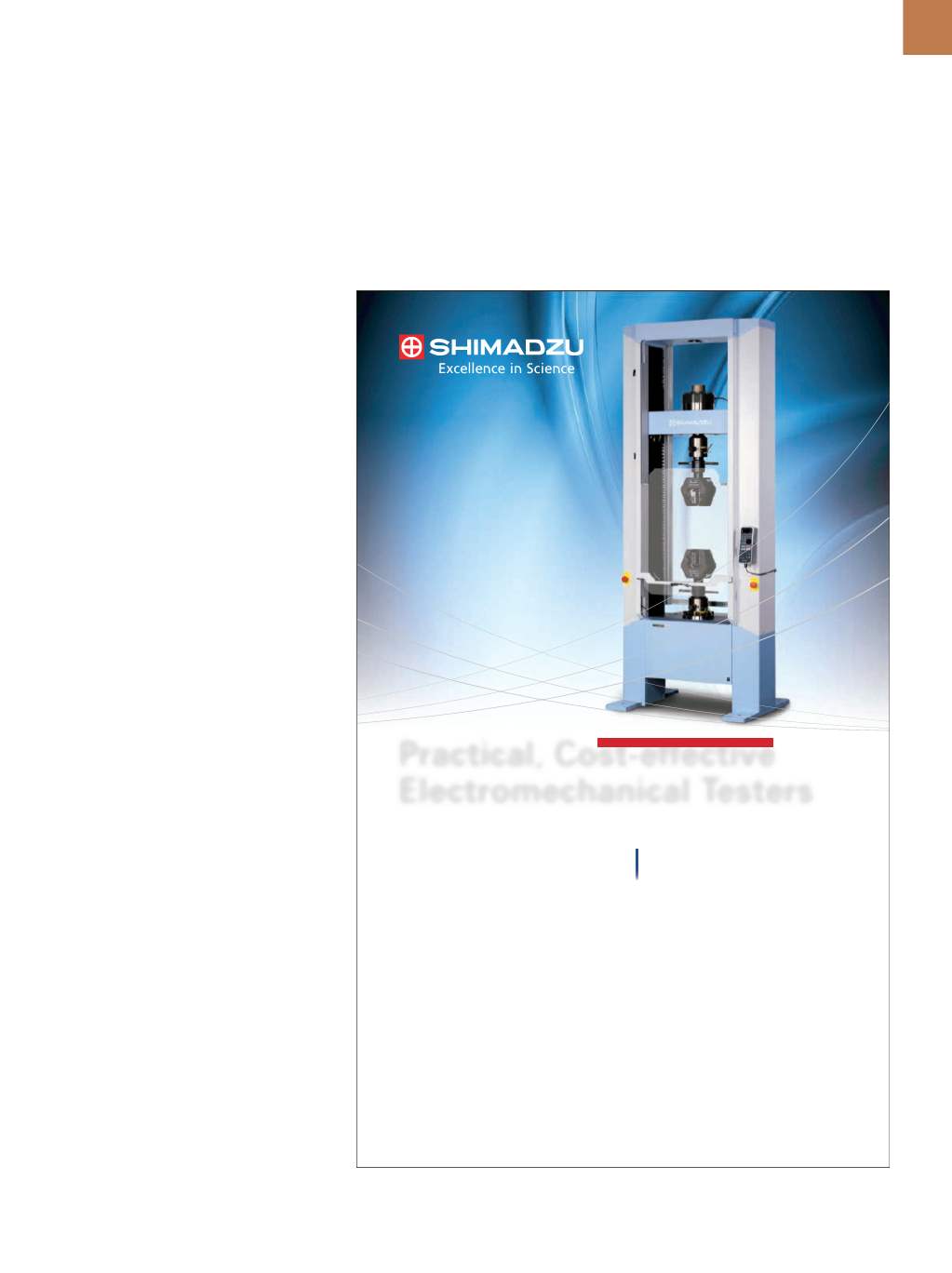

A D V A N C E D
M A T E R I A L S
&
P R O C E S S E S |
S E P T E M B E R
2 0 1 5
2 7
the solidmirror blankswere heat treated,
which was referred to as “HIP disease.”
When O-30 was developed, it was recog-
nized that water molecules entrained on
the surface of powder particles were the
cause of HIP disease, now called “ther-
mally induced porosity.” The process was
further developed to eliminate the water
molecules and therefore the disease.
The James Webb Space Telescope
is scheduled for launch in 2018. It is
expected to provide as dramatic an
improvement over the Hubble as the
Hubble did over previous observato-
ries. The evolution of beryllium as the
optical material will provide a substan-
tial contribution to the success of the
new telescope.
~AM&P
For more information:
James Marder is
vice president of materials and process
development, Thermacore Inc., 440 Jon-
athanWilley Rd., Belle Vernon, PA 15012,
724.379.1490,
j.m.marder@thermacore. com,
www.thermacore.com.Acknowledgment
The authors would like to acknowl-
edge the cooperation of Materion Corp.
in the preparation of this article. In addi-
tion, the contributions of Mark Hashigu-
chi and Daniel Slates of Materion for the
metallographic support were essential.
References
1. W.P. Barnes, Jr., Considerations
in the Use of Beryllium for Mirrors,
Applied Optics
, Vol 5, No. 12, p 1883,
1966.
2. E.W. Gossett, Jr., et al., Evaluation of
Hot Isostatic Beryllium for Low Scatter
Cryogenic Optics,
Proc. SPIE
,
Space
Optical Materials and Space Qualifica-
tion of Optics,
Vol 50, p 1118, 1989.
3. Gunter’s Space Page, GOES 4, 5, 6, G,
7
, http://space.skyrocket.de/doc_sdat/ goes-d.htm.4. J.C. Campbell, Metal Optics for a
Visible Infrared Spin-Scan Radiometer,
Proc. SPIE
,
Design, Manufacture and
Application of Metal Optics,
Vol 97,
p 0065, 1976.
5. J.L. Fanson, et al., The Space Infra-
red Telescope Facility,
Proc. SPIE
,
Space
Telescopes and Instruments V
, p 3356,
1998.
6. Explore James Webb Space
Telescope, NASA website,
www.jwst.nasa.gov.7. D. Hashiguchi and J.M. Marder,
Spherical Beryllium Powder, WL-
TR-91-8017, Wright Laboratory, Air
Force Systems Command, Wright
Patterson AFB, 1991.
8. D.A. Gildner and J.M. Marder, Creation
of Aspheric BerylliumOptical Surfaces
Directly in the Hot Isostatic Pressing Con-
solidation Process,
Proc. SPIE, Reflective
and Refractive Optical Materials for Earth
and Space Applications,
p 1485, 1991.
Combining advanced specifications with an affordable, modern design, Shimadzu’s AGS-X Series of floor and tabletop universal testers delivers practical solutions across a wide range of applications. By incorporating multiple control options, load cells with maximum capacities from 1 N to 300 kN, and the utmost in safety considerations, the AGS-X series is the choice for easier, more efficient testing . Shimadzu’s AGS-X Series features: ■ Accurate stress-strain curves with Class 0.5 load cells ■ High-speed data sampling up to 1 msec (1 kHz) ■ Precise stress- and strain-controlled testing ■ Comprehensive safety measures ■ Easy-to-use software with a refined user interface for more efficient, effective testing Shimadzu Scientific Instruments Inc., 7102 Riverwood Dr., Columbia, MD 21046, USA Learn more. Call (800) 477-1227 or visit us online at www.ssi.shimadzu.com/AGSX Practical, Cost-effective Electromechanical Testers In addition, a comprehensive selection of grips, compression plates, jigs, extensometers, and other accessories allow configurations to be tailored to almost any application. Adaptable to Countless Applications

















